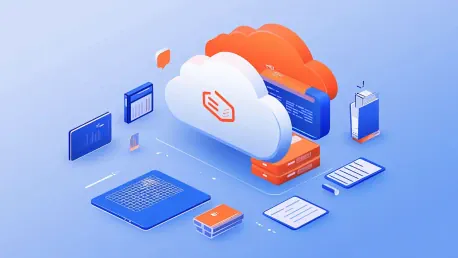Law enforcement agencies are increasingly turning to cloud storage solutions to manage and retain the vast amounts of data generated by modern technologies such as body-worn cameras and drones. This shift is driven by the demand for efficient data management, cost-effectiveness, and enhanced operational flexibility. The adoption of hybrid cloud environments, which combine on-premises, private, and third-party public cloud services, has become a common strategy among these agencies.
The Rise of Data-Intensive Technologies
The proliferation of body-worn cameras, in-vehicle cameras, and drones has significantly increased the volume of data that law enforcement agencies must handle. An illustrative example is the Calcasieu Parish Sheriff’s Office in Louisiana, which manages data from over 400 body-worn cameras and 250 in-vehicle cameras. This data is meticulously stored using Getac’s digital evidence management system and Cloudian’s HyperStore S3-compatible object storage solution. By leveraging both data centers and Amazon Web Services’ cloud service, the agency ensures that the data can be restored in the event of a data center loss.
Chief Technology Officer Adrian Quintela emphasizes the crucial role of cloud-based storage in preserving information indefinitely for legal matters, drawing attention to the importance of retaining information that might be critical for lengthy periods. The ability to pull data back from the cloud serves as a vital backup measure, ensuring that the integrity and availability of data are maintained regardless of any disruptions to physical infrastructure.
Cost-Effectiveness and Resource Allocation
The migration to cloud environments is largely driven by the quest for storage efficiency and cost savings. Ash Johnson, Senior Policy Manager at the Information Technology and Innovation Foundation, notes that cloud computing allows agencies to reallocate resources towards hiring more officers or investing in other essential technologies. The ease of updating systems through software-driven cloud solutions, as opposed to managing extensive hardware, is particularly appealing to agencies with smaller IT departments.
The Sonoma County Sheriff’s Office in Northern California exemplifies this approach by integrating a hybrid cloud strategy to manage disaster recovery and ensure operational continuity. After experiencing connectivity disruptions during the Tubbs Fire, the office now leverages Microsoft Azure for cloud storage while backing up crucial data on-premises and offline to safeguard against ransomware attacks. This hybrid approach ensures that data remains secure and accessible, even in the face of severe natural disasters that could otherwise disrupt communication and data integrity.
Enhancing Operational Flexibility
The Portland Police Bureau in Oregon has taken proactive steps to enhance operational flexibility by adopting Microsoft 365’s cloud-based suite. This transition has aimed to reduce on-premises storage costs and enable greater flexibility for the bureau’s mobile workforce. The bureau’s move towards a cloud-based body camera system and plans to migrate its record management system to the cloud reflect a broader trend of leveraging cloud services to optimize operational efficiency.
Despite the broader migration to cloud environments, the Portland Police Bureau retains some applications on-premises for high-performance needs that require substantial connectivity. This balanced approach allows the bureau to exploit the benefits of cloud storage while ensuring reliable, high-speed access to critical applications. By maintaining a hybrid cloud infrastructure, the bureau can address both the need for flexible data management and the necessity for fast, reliable access to essential data in real-time operations.
Navigating Compliance and Security Concerns
Statistics from the 2023 State of City and County IT National Survey by CompTIA and the Public Technology Institute reveal that 43% of local government IT executives have shifted their on-premises infrastructure to a public cloud. However, due to compliance requirements, existing protocols, and concerns about the resource demands of a full transition to the cloud, many agencies prefer a hybrid approach. This allows them to maintain critical services on-premises while leveraging cloud solutions for more extensive data management and disaster recovery.
Infrastructure adjustments are necessary to accommodate hybrid cloud systems, which, although initially costly, ultimately position agencies to benefit from scalable cloud capabilities. The Portland Police Bureau’s investments in additional bandwidth and Fortinet FortiGate firewalls exemplify the types of adaptations needed to ensure secure connectivity within a hybrid cloud setup. Rick Schulte, Division Manager of Public Safety Technology, emphasizes how the bureau’s hybrid configuration facilitates efficient data access and operational flexibility, particularly for a workforce that requires mobile capabilities and reliable access to data on the go.
Balancing On-Premises and Cloud Systems
Law enforcement agencies are increasingly adopting cloud storage solutions to handle the growing volume of data generated by modern technologies like body-worn cameras and drones. These systems capture enormous amounts of information that need to be securely stored and easily accessible. The shift towards cloud storage is largely driven by the need for efficient data management, cost reduction, and improved operational flexibility. By using cloud solutions, agencies are able to streamline their processes, allowing them to focus more on their core mission of public safety.
The trend toward adopting hybrid cloud environments is especially notable. Hybrid clouds blend on-premises, private cloud, and third-party public cloud services, offering agencies the best of all worlds. This approach not only provides enhanced security for sensitive data by keeping it in-house but also allows access to the scalability and cost-efficiency of public cloud services. Law enforcement agencies find this combination particularly beneficial as it offers robust, flexible, and secure solutions for their vast and ever-growing data storage needs.









